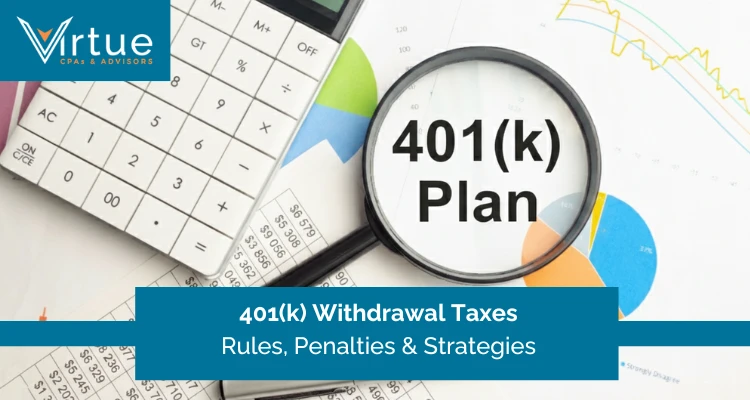If you’re running a startup or managing a growing private company, chances are you’ve heard of something called “409A valuation.”
Maybe your lawyer mentioned it when you were setting up your first stock option plan.
Maybe your accountant brought it up before tax season.
Either way, Section 409A of the Internal Revenue Code might sound intimidating — and honestly, it kind of is. It’s a set of tax regulations that governs deferred compensation and stock-based benefits.
And if your company doesn’t follow it correctly, the IRS can slap you with massive penalties — not just for the business, but for your employees too.
The truth is, Section 409A isn’t meant to scare you. It’s meant to make sure companies don’t play fast and loose with the value of compensation that will be paid in the future.
In this blog post, we’ll walk you through:
- What Section 409A actually means
- What a 409A valuation is
- What “Safe Harbor” valuations are and why they matter
- How to get and maintain compliance
Ready? Let’s get into it.
What Is a 409A Valuation?
A 409A valuation determines the fair market value (FMV) of your company’s common stock.
Basically, what your shares are worth in a fair transaction between a willing buyer and seller.
Why is that important? Because when you grant stock options to employees, the exercise price must be at least equal to the fair market value. If you set it lower, the IRS considers it a form of discounted compensation — and that violates 409A.
For private companies that don’t have a public market to determine stock value, this valuation is the only way to know what “fair market value” truly means.
History and Purpose of Section 409A
Back in the early 2000s, corporate scandals were making headlines.
These companies found creative ways to manipulate deferred compensation plans to benefit top executives, often while ordinary employees and investors got left behind.
To stop that kind of abuse, Congress passed the American Jobs Creation Act of 2004, which introduced Section 409A into the Internal Revenue Code.
The goal was simple - Make sure that deferred compensation (that is, money or benefits you earn now but receive later) follows clear rules about when and how it’s paid out.
409A essentially says:
“If you defer income — like bonuses, equity, or severance — you can’t just decide later when you’ll get it or change the terms whenever you want. You must follow a fixed structure and valuation process.”
That structure protects both the company and the IRS’s interest in collecting fair taxes.
What Section 409A Regulates
Section 409A deals with nonqualified deferred compensation plans — a fancy term that just means any type of pay you earn now but receive in the future that isn’t part of a typical 401(k) or pension.
Here are a few examples you’ll recognize:
- Stock options (if granted below fair market value)
- Restricted Stock Units (RSUs)
- Phantom stock or stock appreciation rights
- Deferred bonuses or incentive pay
- Severance agreements that extend beyond two and a half months after termination
What doesn’t count?
- Regular salaries or bonuses are paid soon after earning them
- Qualified retirement plans (like 401(k)s)
- Short-term deferrals (paid within 2.5 months of year-end)
If you offer stock options or other forms of equity compensation, you definitely fall under 409A territory.
When 409A Valuations Are Required
You need a new valuation:
- Before granting new stock options or equity awards
- After major company events, like fundraising, acquisitions, leadership changes, or big revenue growth
- Every 12 months, even if nothing major happens, because valuations expire after a year
Here’s a simple rule of thumb:
“If something happens that makes your company more (or less) valuable, it’s time for a new 409A valuation.”
For example, if you raise a new round of funding, your company’s value jumps — and the old valuation no longer reflects reality.
Who Conducts the 409A Valuation
Technically, the IRS allows companies to do their own valuations internally.
But unless you have a qualified appraiser on staff (and the documentation to back it up), that’s risky.
Most companies use independent third-party valuation firms like Virtue CPAs.
We specialize in 409A valuations and know exactly what the IRS expects.
This includes:
- Your financial statements and forecasts
- Market comparables (similar companies in your industry)
- Recent transactions or funding rounds
- Your company’s risk profile and growth stage
They’ll then produce a detailed report that documents how they reached the valuation and why it’s reasonable.
The IRS gives much more credibility to independent valuations — and in fact, that’s one of the three “Safe Harbor” methods we’ll talk about next.
Safe Harbor Valuation Methods
The IRS understands that valuations aren’t an exact science.
So, it offers Safe Harbor protections — meaning if you follow certain approved valuation methods, your valuation is presumed to be reasonable.
In plain English, that means:
“If you meet the Safe Harbor requirements, the IRS has to prove your valuation is wrong — not the other way around.”
That’s a big deal, because it shifts the burden of proof. It doesn’t mean you’re 100% untouchable, but it gives you a strong layer of protection if you ever get audited.
There are three Safe Harbor methods you can use to stay compliant.
1 - Independent Appraisal Safe Harbor
This is the most common — and most reliable — Safe Harbor method.
You hire an independent, qualified appraiser to perform a professional valuation of your company’s stock. The appraiser must use accepted valuation methods (like discounted cash flow, market comparables, or precedent transactions) and deliver a written report.
If you meet these conditions, the IRS will assume your valuation is reasonable.
It’s considered the “gold standard” because:
- It’s objective and defensible
- It satisfies investors, auditors, and acquirers
- It covers you for 12 months (unless something major changes)
Most startups and private companies use this route.
2 - Formula-Based Safe Harbor
This method is much rarer, but it does exist.
A formula-based Safe Harbor is used when a company’s shares are consistently bought and sold according to a fixed formula — for example, a formula based on book value or earnings multiple.
To qualify:
- The formula must be used for all transactions (not just employee grants).
- The shares must not be publicly traded.
- You must apply the formula consistently, even for non-compensatory transactions.
This works well for family-owned businesses or tightly held companies with fixed buy/sell formulas — but not for most startups.
3 - Illiquid Startup Safe Harbor
This one’s built specifically for young, private startups that don’t have public stock or an imminent sale/IPO.
To qualify, your company must:
- Be less than 10 years old
- Have illiquid stock (no secondary market)
- Not anticipate an IPO or change in control within the next 12 months
- Use someone with significant valuation experience to prepare the report
- Document everything in writing
If you meet these rules, the IRS assumes your valuation is fair — unless it’s grossly unreasonable.
This method is especially helpful for early-stage startups that can’t yet afford a formal third-party valuation but still want Safe Harbor protection.
Steps to Achieve 409A Safe Harbor Compliance
You’ve learned what 409A means and how Safe Harbor protects you.
Now, let’s walk through exactly how to put all of this into practice.
A. Preparation
Before you even start a valuation, spend a little time preparing.
- Gather financial information - Pull your financial statements, forecasts, and any projections that show how the company is expected to perform over the next year.
- Review your capitalization table - Make sure you have an accurate picture of all shares issued, option pools, preferred stock, and investor ownership.
- Identify material events - Have you raised a funding round? Bought by a strategic investor? Changed your product or leadership team? These all affect your value.
- Check your last valuation date - If it’s been 12 months or more—or if any big event has happened—you’re due for a new one.
- Decide who’s involved - This isn’t just an HR task. Bring in finance, legal, and accounting teams so everyone stays aligned.
Doing this homework upfront makes the actual valuation process smooth and avoids back-and-forth later.
B. Choose the Right Safe Harbor Method
Not all Safe Harbor routes are created equal. Which one is best depends on your company’s stage.
- Independent Appraisal Safe Harbor - Perfect if you’ve raised institutional capital, have complex capitalization, or expect investor scrutiny.
- Illiquid Startup Safe Harbor - Great for early-stage companies that haven’t raised significant funding or created a secondary market for their shares.
- Formula-Based Safe Harbor - Mostly used by family-owned or long-established businesses with consistent buy/sell formulas.
A quick conversation with Virtue CPAs can help you decide which path gives you the most protection for your money.
C. Conduct and Documenting the Valuation
This is where the rubber meets the road. Whether you hire an independent appraiser or use an internal expert (for a qualified startup Safe Harbor), you’ll need to document the valuation thoroughly.
- Explain your methodology - Most valuations use one or more of these: discounted cash flow (DCF), market comparables, or precedent transactions.
- State your assumptions clearly - Growth rates, discount rates, and comparable companies all matter.
- Write a clear report - Include a narrative explaining your reasoning, not just spreadsheets.
- Get board approval - Your board should formally approve the valuation or option grant pricing in a meeting or written consent.
- Keep records - Save every report, email, and piece of supporting data. If the IRS ever questions your valuation, documentation is your best defense.
D. Maintain Ongoing Compliance
You can’t “set it and forget it.” 409A compliance is an ongoing process.
- Refresh annually - Even if nothing changes, update your valuation every 12 months.
- Revalue after major events - Fundraising, acquisitions, product launches, or executive changes are all material events.
- Keep teams aligned - HR should notify finance before issuing any new options; finance should notify legal if new funding is on the horizon.
- Educate employees - Explain why valuations matter and how they protect everyone from tax surprises.
By treating 409A compliance as part of your annual business rhythm—like budgeting or audits—you’ll keep everything smooth and defensible.
Role of 409A Compliance in Corporate Governance and M&A
Section 409A compliance might feel like a box to check, but in reality, it’s a huge signal of professionalism and transparency.
During Due Diligence
When investors or acquirers look at your company, they want to know your financial house is in order.
A clean 409A valuation tells them you respect rules, manage equity carefully, and avoid unnecessary risk.
If they find sloppy records or expired valuations, it can raise red flags. Deals have been delayed—or even derailed—because option pricing didn’t align with 409A rules.
By contrast, a company with up-to-date 409A reports sends a clear message:
“We take compliance seriously. You can trust our numbers.”
In Employee Compensation Strategy
Employees join startups for the upside—the promise that their stock options could one day be worth a fortune.
But that only works if those options are priced correctly.
A defensible 409A valuation ensures:
- Employees aren’t blindsided by unexpected taxes.
- Stock options are granted at a fair, compliant price.
- Everyone understands how their equity’s value is determined.
It also keeps your company competitive. When candidates compare offers, clear and compliant equity plans make a great impression.
After a Merger or Acquisition
Once your company merges or is acquired, the old 409A valuation becomes outdated.
The new entity must conduct a fresh valuation reflecting the combined structure and updated capitalization.
Ignoring this step can cause problems when granting new options post-deal. Keeping a 409A process in place through the transition avoids confusion and potential compliance gaps.
Best Practices for Long-Term 409A Compliance
To make your 409A compliance effortless and low-stress, here are the best long-term practices to follow.
Schedule Regular 409A Updates
It’s easy to put off valuations when things get busy.
But letting your 409A valuation expire or get stale is one of the biggest mistakes companies make.
A good rule of thumb: treat your valuation like your annual physical.
Even if nothing’s wrong, it’s smart to check in regularly.
Here’s what that looks like in practice:
- Set a recurring reminder every 11 months to begin preparing for your next valuation.
- Build the valuation cost into your yearly budget.
- Assign a point person (often your CFO or HR director) to oversee the process.
By making it routine, you’ll avoid panic when investors or auditors ask for your latest report — because you’ll already have it.
Keep Detailed Documentation for Every Valuation
Documentation isn’t just paperwork; it’s your company’s best defense.
If the IRS ever questions your valuation, strong records will prove you acted reasonably and followed Safe Harbor procedures.
Here’s what you should keep:
- Copies of all valuation reports (final and draft versions).
- Supporting data like financial statements, board approvals, and comparable company analysis.
- Notes from board meetings where the valuation or stock option grants were discussed.
- Emails or memos showing how decisions were made.
Create a shared digital folder for “409A Compliance Documents.” Make sure it’s secure but accessible to your finance and legal teams.
When it comes to 409A, organized records = peace of mind.
Build Awareness Across Departments
409A compliance often falls apart because one department acts without telling the others.
For example:
- HR issues new option grants but forgets to confirm if the current valuation is still valid.
- Finance closes a new funding round but doesn’t alert HR or legal that a material change has occurred.
- The legal team updates the stock plan but doesn’t circulate it to payroll.
The fix? Communication.
Host a quick 409A sync-up once or twice a year.
It doesn’t have to be long — 15–30 minutes is plenty, and make sure to include HR, finance, and legal.
Use this meeting to check:
- When was your last valuation done?
- Whether any material events have occurred.
- What does your next grant cycle look like?
The more everyone understands the triggers for reevaluation, the fewer compliance gaps you’ll face.
Partner with Trusted Valuation Experts
Even if you’re an experienced CFO or CPA, 409A valuations are complex.
Engaging an independent valuation firm like Virtue CPAs saves time, stress, and risk.
The benefits of professional help include:
- Accurate valuations that meet IRS Safe Harbor standards.
- A defensible report with clear methodologies.
- Guidance on when to revalue and what events trigger it.
- Consistency year after year, even as your company evolves.
A good valuation partner isn’t just a vendor — they’re part of your long-term compliance strategy.
Stay Ahead of “Material Events”
A “material event” is anything that could significantly affect your company’s value.
You need to know these triggers like the back of your hand because they’re the most common reasons for needing a new 409A valuation.
Here are some examples:
- A new funding round or investment term sheet.
- A major revenue milestone (like hitting profitability or signing a key customer).
- A change in leadership or ownership.
- Product launches that open new markets.
- M&A activity — whether you’re buying or being bought.
The key is to stay alert. If something big happens, don’t wait — get ahead of it by consulting your CPA or valuation expert to determine if a new valuation is needed.
Align Your Board Approvals with 409A
Many startups forget that their board of directors plays a formal role in valuation acceptance.
When you receive a new 409A valuation, your board should formally acknowledge and approve it, usually in the same meeting where stock option grants are authorized.
This not only shows governance discipline but also creates a clear paper trail that supports your Safe Harbor position.
Pro tip: include a recurring agenda item in board meetings labeled “409A Review and Approval.” That ensures you never skip the step.
Communicate Transparently with Employees
Your employees care deeply about their stock options — and they should.
But many misunderstand what 409A valuations are or why their option strike price changes over time.
Here’s how to handle that conversation with clarity:
- Explain that the valuation reflects fair market value — not investor value or the company’s “worth.”
- Remind them that a higher strike price often signals company growth, not a disadvantage.
- Reassure them that regular valuations protect them from surprise tax penalties.
Transparency builds trust. When employees understand how their equity is priced, they feel more confident in your leadership and the company’s financial integrity.
Integrate 409A into Your Financial Calendar
You likely already plan your fiscal year around key events — audits, tax filings, and budget reviews. Add your 409A valuation to that same rhythm.
Here’s a simple example of how your compliance calendar might look:
| Month | Compliance Task |
|---|---|
| January | Financial close, prepare for audit |
| March | Tax filing and 409A data gathering |
| May | Board review of compensation plans |
| July | Mid-year valuation review (if needed) |
| October | Renew 409A valuation for next year |
By aligning 409A work with existing financial milestones, it becomes part of your routine — not a stressful surprise.
Budget for Compliance Like a Business Expense
Many companies treat valuations as an “extra cost.”
In reality, it’s an essential business expense, just like insurance or payroll services.
Budgeting for it ensures you won’t delay or skip compliance when funds are tight. Consider setting aside a small percentage of your annual administrative budget for 409A valuations and related compliance costs.
It’s like an investment in audit protection — because fixing a 409A mistake later costs far more than doing it right upfront.
Review and Refresh Your Policies Annually
Your company isn’t static, and neither are your compliance needs.
Make it a habit to review your stock option plan, deferred compensation agreements, and valuation policies once a year.
Ask yourself:
- Are our policies still aligned with IRS 409A guidance?
- Have we outgrown our current valuation provider or process?
- Are our internal teams properly trained on 409A triggers?
A short annual policy check helps you stay compliant, even as your company evolves from scrappy startup to established player.
Conclusion
You now know that IRC Section 409A isn’t just some obscure tax rule—it’s a safeguard.
It protects both your company and your employees by ensuring stock options and deferred compensation are priced fairly.
The takeaway?
409A compliance isn’t optional. It’s essential for protecting your company’s reputation, your employees’ trust, and your future funding or exit opportunities.
If all of this still feels complex, that’s okay—you don’t have to handle it alone.
Virtue CPAs is here to help. Our experienced professionals specialize in 409A valuations, Safe Harbor compliance, and ongoing advisory support for startups and private companies. We’ve helped dozens of businesses navigate these exact rules without stress or surprises.
Contact Virtue CPAs today for a personalized 409A compliance consultation—and gain peace of mind knowing your company is protected.
Frequently Asked Questions (FAQs)

Jeet Chaudhary
Jeet Chaudhary serves as the Chief Operating Officer at Virtue CPAs, where he leads the firm’s Global Control Centre and oversees end-to-end operational excellence.






